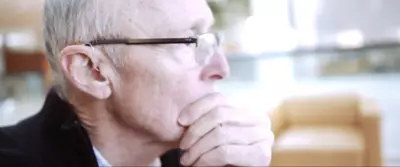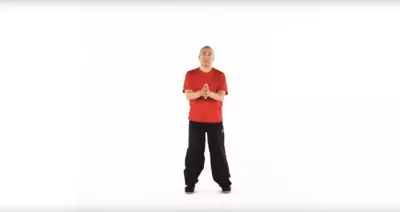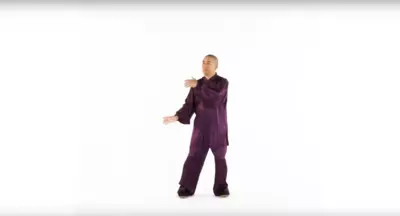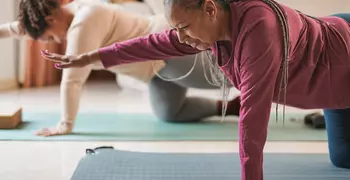What Are Some Integrative Therapies to Consider for Parkinson’s?

 Parkinson’s is a complex disease that manifests in different ways for everyone and includes both motor and non-motor symptoms, from tremors and dyskinesia to depression and cognitive difficulties. Because the spectrum of experiences is broad, many people seek a variety of treatments and practices to manage symptoms. These approaches include holistic, or integrative therapies, in addition to standard pharmacological and surgical treatments.
Parkinson’s is a complex disease that manifests in different ways for everyone and includes both motor and non-motor symptoms, from tremors and dyskinesia to depression and cognitive difficulties. Because the spectrum of experiences is broad, many people seek a variety of treatments and practices to manage symptoms. These approaches include holistic, or integrative therapies, in addition to standard pharmacological and surgical treatments.
Depending on which survey you read, anywhere from 40-85% of people with PD try some form of holistic therapy - and most who try them find them to be effective.
Integrative or holistic therapies should not be considered cures for Parkinson’s; rather, they can address the wellbeing of the whole person - body, mind, spirit - and work in tandem with conventional approaches recommended by your healthcare provider. Because of this, you should always let your provider know what integrative therapies you are considering using.
Acupuncture
 It can be difficult to gather high-quality scientific evidence on acupuncture, because the nature of the practice makes randomizing and blinding difficult (though some studies have used “sham” acupuncture on control groups). But there are a growing number of small studies that suggest acupuncture - or in some cases, electroacupuncture, which adds a small current of electricity to the needles - may help with gait and pain. A more substantial body of research indicates that acupuncture can be an effective treatment for nausea and chronic pain, which are sometimes associated with Parkinson’s.
It can be difficult to gather high-quality scientific evidence on acupuncture, because the nature of the practice makes randomizing and blinding difficult (though some studies have used “sham” acupuncture on control groups). But there are a growing number of small studies that suggest acupuncture - or in some cases, electroacupuncture, which adds a small current of electricity to the needles - may help with gait and pain. A more substantial body of research indicates that acupuncture can be an effective treatment for nausea and chronic pain, which are sometimes associated with Parkinson’s.
Additionally, there is anecdotal evidence that acupuncture can address non-motor symptoms, such as anxiety or depression. Whether this is simply the placebo effect at work is unclear. The Michael J. Fox Foundation for Parkinson’s Research states that “Acupuncture could be a helpful add-on therapy for PD motor and non-motor symptoms, and it appears to be generally safe and well tolerated.”
Aromatherapy
 While there isn’t specific research dedicated to the impact of aromatherapy, or essential oils, on Parkinson’s disease, there is significant data to show that it can help with quality of life for everyone. Certain oils can be used - either applied to the skin or inhaled - to help ease nausea and pain, relieve anxiety, and promote relaxation. Bergamot, for example, has a mild antidepressant effect, while peppermint can help with nausea and fatigue.
While there isn’t specific research dedicated to the impact of aromatherapy, or essential oils, on Parkinson’s disease, there is significant data to show that it can help with quality of life for everyone. Certain oils can be used - either applied to the skin or inhaled - to help ease nausea and pain, relieve anxiety, and promote relaxation. Bergamot, for example, has a mild antidepressant effect, while peppermint can help with nausea and fatigue.
Even if you experience an altered or diminished sense of smell, you may still find that essential oils have therapeutic benefits. Some research indicates that physiological benefits still occur, even when the user cannot fully experience the fragrance.
Boxing
For people living with Parkinson’s, the opportunity to “fight back” against the disease is appealing - and boxing provides just that. Modified boxing exercises, provided within the context of classes for people with PD, have been effective in improving both motor and non-motor symptoms.
Among the small studies that have been conducted so far, all report improvement in gait, posture, hand-eye coordination, and balance. Additionally, a majority of participants report improvement in anxiety, depression, and fatigue. “[Boxing has] brought about a lot of joy, to be honest...which makes a huge difference,” says one participant.
Group classes (in which participants spar with punching bags, not one another!) offer a sense of camaraderie and fellowship, which can help ease the sense of isolation that often comes with Parkinson’s. Rock Steady Boxing, the first Parkinson’s boxing organization, offers classes throughout the world - both in-person and online. Title Boxing also has classes for PD patients in many locations throughout the country.

Rock Steady Boxing
Video Credit: Rock Steady Boxing
Massage
 There are many different styles and techniques of massage therapy, which can be helpful for symptoms of Parkinson’s and improve overall quality of life. Most of the research points to the benefits of relaxation provided by massage, as well as relieving muscular stiffness and rigidity. Many people also report a decrease in pain, fatigue, sleep disturbances, anxiety, and depression after using massage therapy.
There are many different styles and techniques of massage therapy, which can be helpful for symptoms of Parkinson’s and improve overall quality of life. Most of the research points to the benefits of relaxation provided by massage, as well as relieving muscular stiffness and rigidity. Many people also report a decrease in pain, fatigue, sleep disturbances, anxiety, and depression after using massage therapy.
Some massage styles - including Thai massage, Traditional Japanese massage, and neuromuscular therapy - seem to improve motor symptoms as well.
You’ll need to do some research to ensure you find a massage therapist who is experienced and makes you feel comfortable. If you have Deep Brain Stimulation (DBS), do not allow the therapist to massage along any of the system components. Be sure to ask what styles of massage they use and if they have experience working with symptoms of Parkinson’s. A good place to start is to ask your healthcare provider for recommendations.
Tai chi and Qigong
For people interested in improving balance and mobility through gentle movements, tai chi or Qigong are excellent choices. Both are mind-body exercises based on Chinese philosophy and martial arts, and integrate focused attention, imagery, mindful breathing, and repetitive flowing movement (typically while standing, though some classes for people with Parkinson’s will modify these movements to a seated version). Robust research on tai chi supports reduced falls and enhanced balance and gait. Both tai chi and Qigong show promise for improving non-motor symptoms, including depression, pain, memory, and stress reduction - but evidence for these benefits is still preliminary.
When starting a tai chi program, “Try out 2 or 3 different classes or programs - either in-person or virtually,” says Peter Wayne, PhD, professor and Director of the Osher Center for Integrative Medicine. “And start with a buddy. It’s great to have someone to learn with and you can keep one another motivated to stay the course.” Be sure to talk to your healthcare provider before starting any exercise program, and if balance is a concern, make sure you have someone nearby when trying these movements.

Standing Tai Chi Calisthenics
Video credit: Harvard Health Publishing and Dr. Peter Wayne

Traditional Tai Chi Elements
Video credit: Harvard Health Publishing and Dr. Peter Wayne
Yoga
 The ancient practice of yoga can have a holistic effect. While many people with Parkinson’s do yoga to improve motor skills (including balance, mobility, and strength), research also shows that it can alleviate depression, make breathing easier, and help you feel calm.
The ancient practice of yoga can have a holistic effect. While many people with Parkinson’s do yoga to improve motor skills (including balance, mobility, and strength), research also shows that it can alleviate depression, make breathing easier, and help you feel calm.
There are many types of yoga, from Hatha to Power to Vinyasa. Because every person with Parkinson’s experiences the disease differently, there isn’t one single recommendation for a type of yoga that is most beneficial. Talk to your healthcare provider, or ask your local Parkinson’s organization to offer recommendations - many places have online or in-person classes that are modified to address symptoms of PD. The Parkinson’s Foundation has a sample yoga sequence for beginners on their blog.
Dance
Dance therapy isn’t as intimidating as it sounds - when led by a certified dance therapist, you’re not required to learn difficult choreography or perform. According to the Parkinson’s Foundation, dance therapy “allows individuals to move and find comfort in their bodies and to express what words might be too difficult to uncover.” Dance is an increasingly appealing activity for people with PD, as it has been shown to improve mobility, balance, and emotional wellbeing. It is also helpful to stimulate new learning, which is important for cognitive health.
Argentine tango in particular has been shown to improve balance and reduce motor symptoms such as rigidity and tremors. Tango also helps build connections with others, leading to greater feelings of wellbeing. Participants in dance classes do not have to learn complex step sequences - rather, the focus is on learning to improvise with spontaneous movements to the music. Most people find dancing fun, which helps them stick to it.
Tango classes for people with PD can be found online as well as in-person and may be offered through community centers or through local chapters of the American Parkinson’s Disease Association. Go! Tango PD is a national organization that offers virtual classes designed specifically for people with Parkinson’s. To find a dance therapist, visit the American Dance Therapy Association.

Tango and Parkinson's
Video credit: Tango Soul Productions
Music therapy
 Because dopamine loss is a feature of Parkinson’s disease, and listening to enjoyable music increases dopamine, many people find joy and ease of symptoms by listening to music, singing, or even writing their own songs.
Because dopamine loss is a feature of Parkinson’s disease, and listening to enjoyable music increases dopamine, many people find joy and ease of symptoms by listening to music, singing, or even writing their own songs.
Rhythm in particular can be helpful - drumming circles, for example, have been shown to increase quality of life for people with PD. Rhythmic Auditory Stimulation (RAS) - in which the beat from a metronome or music sets the pace for ordinary movements, such as walking - can help with freezing, speed, and step coordination. Some people respond better to a faster rhythm, while others need slower, depending on what specific issue you’re working on.
Music-based movement, which includes singing and playing percussive instruments, has also been shown to improve gait and motor function. Therapeutic singing encourages you to take deeper breaths and project volume. For people with speech issues, sometimes singing a phrase can help you remember how to say it.
While many hospitals and Parkinson’s organizations offer programs led by a certified music therapist, you can also try listening to music you love at home, tapping your feet or hands along with the beat, or singing - either alone or with friends.
Nature-based therapy
 The healing benefits of being in nature are well-documented, including stress reduction, decreased blood pressure, improved mood, and an easier time coping with pain. It’s no wonder places like Struther’s Parkinson’s Center in Minnesota are investing in outdoor therapy areas - including gardens, benches, birdfeeders, and walkways - as well as indoor landscapes so that patients can connect with nature even during inclement weather.
The healing benefits of being in nature are well-documented, including stress reduction, decreased blood pressure, improved mood, and an easier time coping with pain. It’s no wonder places like Struther’s Parkinson’s Center in Minnesota are investing in outdoor therapy areas - including gardens, benches, birdfeeders, and walkways - as well as indoor landscapes so that patients can connect with nature even during inclement weather.
Nature-based activities primarily target cognitive and emotional symptoms of PD, such as anxiety and depression. There are many ways you can reap the benefits at home, such as:
- Planting a garden, flower pot, or herbs
- Holding or petting an animal (borrow a friend’s cat if you don’t have one!)
- Placing beautiful landscapes of nature - either photos or paintings - where you can see them
- Installing a bird feeder (walking to the feeder each day can also be a good form of exercise)
- Having a comfortable seat near a window so you can look outside regularly
- Going outdoors as much as possible, even to simply stand outside for a few minutes
- Watching nature videos or programming on television
Mind-body practices
In addition to mind-body movement practices such as yoga, tai chi, and Qigong, there are non-physical mind-body practices that may be helpful for PD symptoms. Mindfulness meditation, imagery, and intentional relaxation have all been shown to reduce the perception of pain, reduce stress, and improve sleep in healthy adults.

Imagery
Imagery exercises use creative imagination to "picture" scenarios that relax and heal. They can be done on your own, or with a facilitator or recording guiding you. A common relaxation practice is to mentally picture yourself in a pleasant place that puts your mind and body at ease. With your eyes closed, imagine the sights, sounds, and even the smells of your relaxing place - for example, you may picture a beach, imagining the gentle sounds of waves and the feeling of warm sand against your feet.

Deep Breathing
Try imagining a spot just below your navel. Breathe into that spot and fill your abdomen with air. Let the air fill you from the abdomen up, then let it out, like deflating a balloon. With every long, slow breath out, you will feel your body becoming more relaxed.
If deep breathing is difficult or if focusing on it brings on anxiety, you can turn your attention to a positive emotion, such as gratitude, or repeat a soothing word in your mind (such as “peace”).
Mindfulness
Mindfulness is the practice of being fully aware, without judgment, of what is happening. Studies show that mindfulness in particular can be helpful for people with Parkinson’s, perhaps by increasing gray matter density in the brain. Both scientific research and anecdotal evidence show that practicing mindfulness can reduce stress and improve anxiety, depression, quality of life, and motor symptoms in people with PD. You can either learn mindfulness on your own or take a class. You may also find a Parkinson’s-specific program, such as the Parkinson’s Foundation’s Mindfulness Mondays online events. The key is to adopt a friendly attitude and meet yourself where you are: for example, short mindfulness exercises may be better than long meditations if you struggle with fatigue.
Note that in cases where severe cognitive disturbances are present, mindfulness may not be an appropriate or helpful practice.
This Parkinson's disease resource is made possible through funding from the Medtronic Foundation.
Angelopoulou, E., Anagnostouli, M., Chrousos, G.P., Bougea, A. (2020). Massage therapy as a complementary treatment for Parkinson’s disease: A Systematic Literature Review. Complementary Therapies in Medicine; 49, 102340. https://doi.org/10.1016/j.ctim.2020.102340
Cheung, C., Bhimani, R., Wyman, J.F. et al. (2018). Effects of yoga on oxidative stress, motor function, and non-motor symptoms in Parkinson’s disease: a pilot randomized controlled trial. Pilot Feasibility Stud; 4, 162. https://doi.org/10.1186/s40814-018-0355-8
Combs, S.A., Diehl, M.D., Staples, W.H., Conn, L., Davis, K., Lewis, N., Schaneman, K. (2011). Boxing training for patients with Parkinson disease: A case series. Physical Therapy, 91(1), 132–142, https://doi.org/10.2522/ptj.20100142
de Dreu, M.J., van der Wilk, A.S.D., Poppe, E., Kwakkel, G., van Wegen, E.E.H. (2012). Rehabilitation, exercise therapy and music in patients with Parkinson's disease: a meta-analysis of the effects of music-based movement therapy on walking ability, balance and quality of life. Parkinsonism & Related Disorders; 18(1), S114-S119.
Dolhun, R. (2017 August 1). Ask the MD: Acupuncture and Parkinson's. Michael J. Fox Foundation for Parkinson's Research. https://www.michaeljfox.org/news/ask-md-acupuncture-and-parkinsons
Donley, S., McGregor, S., Wielinski, C., Nance, M. (2018). Use and perceived effectiveness of complementary therapies in Parkinson's disease. Parkinsonism & Related Disorders; 58, 46-49.
Goodman Group. (2021). Rock Steady Boxing: I Will Fight Back. [Video]. https://thegoodmangroup.com/how-we-innovate/#innovative-partnerships
Hackney, M. E., & Earhart, G. M. (2010). Recommendations for Implementing Tango Classes for Persons with Parkinson Disease. American journal of dance therapy, 32(1), 41–52. https://doi.org/10.1007/s10465-010-9086-y
Hackney M, Bennett C. Dance therapy for individuals with Parkinson's disease: improving quality of life. Research and Reviews in Parkinsonism. 2014;4:17-25 https://doi.org/10.2147/JPRLS.S40042
Hornthal, E. (2017 February 14). Expert Care Experience: Dance/Movement Therapy. Parkinson's Foundation. https://www.parkinson.org/blog/tips/Expert-Care-Experience-Dance-Moveme…
Jin, X., Wang, L., Liu, S., Zhu, L., Loprinzi, P. D., & Fan, X. (2019). The Impact of Mind-body Exercises on Motor Function, Depressive Symptoms, and Quality of Life in Parkinson's Disease: A Systematic Review and Meta-analysis. International journal of environmental research and public health, 17(1), 31. https://doi.org/10.3390/ijerph17010031
Kong, K. H., Ng, H. L., Li, W., Ng, D. W., Tan, S. I., Tay, K. Y., Au, W. L., & Tan, L. (2017). Acupuncture in the treatment of fatigue in Parkinson's disease: A pilot, randomized, controlled, study. Brain and behavior, 8(1), e00897. https://doi.org/10.1002/brb3.897
Kwok, J. Y., Choi, K. C., & Chan, H. Y. (2016). Effects of mind-body exercises on the physiological and psychosocial well-being of individuals with Parkinson's disease: A systematic review and meta-analysis. Complementary therapies in medicine, 29, 121–131. https://doi.org/10.1016/j.ctim.2016.09.016
Larson, D., Yeh, C., Rafferty, M., Bega, D. (2020). Rock Steady Boxing (RSB) participants with Parkinson's disease have better quality of life and lower burden of non-motor symptoms than non-participants. Neurology; 94(15 Supplement), 1210.
Lee, S., Lim, S. (2017). Clinical effectiveness of acupuncture on Parkinson disease: A PRISMA-compliant systematic review and meta-analysis. Medicine: 96(3), p e5836.
Lei, H., Toosizadeh, N., Schwenk, M., Sherman, S., Karp, S., Sternberg, E., & Najafi, B. (2016). A Pilot Clinical Trial to Objectively Assess the Efficacy of Electroacupuncture on Gait in Patients with Parkinson's Disease Using Body Worn Sensors. PloS one, 11(5), e0155613.
Lötzke, D., Ostermann, T., & Büssing, A. (2015). Argentine tango in Parkinson disease--a systematic review and meta-analysis. BMC neurology, 15, 226. https://doi.org/10.1186/s12883-015-0484-0
Michels, K., Dubaz, O., Hornthal, E., & Bega, D. (2018). “Dance therapy” as a psychotherapeutic movement intervention in Parkinson’s disease. Complementary Therapies in Medicine, 40, 248-252.
Pantelyat, A. (2018 March 24). Rehabilitation in Parkinson's disease: BIG, LOUD, and RHYTHMIC. Presentation at the John Hopkins University School of Medicine. https://parkinsonfoundation.org/wp-content/uploads/2018/04/Alex-Pantely…
Pantelyat, A., Syres, C., Reichwein, S., & Willis, A. (2016). DRUM-PD: The use of a drum circle to improve the symptoms and signs of Parkinson's disease (PD). Movement disorders clinical practice, 3(3), 243–249. https://doi.org/10.1002/mdc3.12269
Parkinson's Foundation. (2021). Yoga for PD. https://www.parkinson.org/georgia/pd-gladiators-fitness-network/yoga
Pickut, B.A., Hecke, W.V., Kerckhofs, E., Marien, P., Vanneste, S., Cras, P., Parizel, P.M. (2013). Mindfulness based intervention in Parkinson's disease leads to structural brain changes on MRI: A randomized controlled longitudinal trial. Clinical Neurology and Neurosurgery; 115(12), 2419-2425.
Roland, K. (2014). Applications of yoga in Parkinson's disease: A systematic literature review. Research and Reviews in Parkinsonism;4:1-8. https://doi.org/10.2147/JPRLS.S40800
Rollins, B. (2016 April 26). PD and Yoga: Unifying Body and Mind. Parkinson's Foundation. https://www.parkinson.org/blog/tips/yoga
Sharma, N. K., Robbins, K., Wagner, K., & Colgrove, Y. M. (2015). A randomized controlled pilot study of the therapeutic effects of yoga in people with Parkinson's disease. International journal of yoga, 8(1), 74–79. https://doi.org/10.4103/0973-6131.146070
Skipper, K. (2019 November 30). The Rhythm of Parkinson's. PMD Alliance. https://www.pmdalliance.org/2019/11/30/the-rhythm-of-parkinsons/
Song, R., Grabowska, W., Park, M. Osypiuk, K., Vergara-Diaz, G.P., Bonato, P., et al. (2017). The impact of Tai Chi and Qigong mind-body exercises on motor and non-motor function and quality of life in Parkinson's disease: A systematic review and meta-analysis. Parkinsonism & Related Disorders; 41, 3-13.
Stegemöller, E.L., Radig, H., Hibbing, P., Wingate, J., Sapienza, C. (2017) Effects of singing on voice, respiratory control and quality of life in persons with Parkinson’s disease, Disability and Rehabilitation, 39:6, 594-600, DOI: 10.3109/09638288.2016.1152610
van der Heide, A., Speckens, A., Meinders, M. J., Rosenthal, L. S., Bloem, B. R., & Helmich, R. C. (2021). Stress and mindfulness in Parkinson's disease - a survey in 5000 patients. NPJ Parkinson's disease, 7(1), 7. https://doi.org/10.1038/s41531-020-00152-9
Vergara-Diaz, G., Osypiuk, K., Hausdorff, J. M., Bonato, P., Gow, B. J., Miranda, J. G., Sudarsky, L. R., Tarsy, D., Fox, M. D., Gardiner, P., Thomas, C. A., Macklin, E. A., & Wayne, P. M. (2018). Tai Chi for Reducing Dual-task Gait Variability, a Potential Mediator of Fall Risk in Parkinson's Disease: A Pilot Randomized Controlled Trial. Global advances in health and medicine, 7, 2164956118775385. https://doi.org/10.1177/2164956118775385
Vickers, A. J., Vertosick, E. A., Lewith, G., MacPherson, H., Foster, N. E., Sherman, K. J., Irnich, D., Witt, C. M., Linde, K., & Acupuncture Trialists' Collaboration (2018). Acupuncture for Chronic Pain: Update of an Individual Patient Data Meta-Analysis. The journal of pain, 19(5), 455–474. https://doi.org/10.1016/j.jpain.2017.11.005
Yu, S., Lin, S., Tsai, C., Chaudhuri, K.R., Huang, Y, et al. (2019). Acupuncture effect and mechanism for treating pain in patients with Parkinson's disease. Front. Neurol., 10:1114.
Zhang, S., Liu, D., Ye, D., Li, H., & Chen, F. (2017). Can music-based movement therapy improve motor dysfunction in patients with Parkinson's disease? Systematic review and meta-analysis. Neurological sciences : official journal of the Italian Neurological Society and of the Italian Society of Clinical Neurophysiology, 38(9), 1629–1636. https://doi.org/10.1007/s10072-017-3020-8


